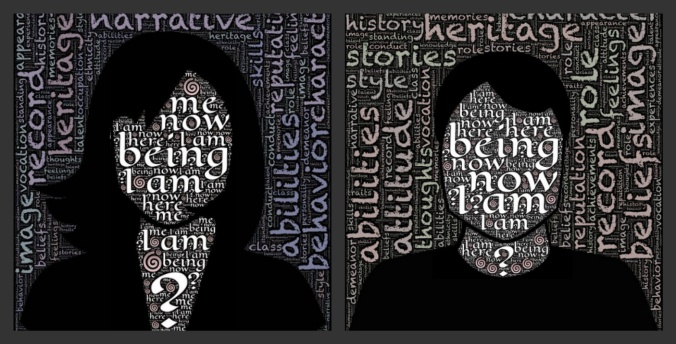
As each generation does, our children will grow up to shape the world. They need plenty of creativity and enthusiasm for the task ahead. Nurturing them in loving relationships with plenty of freedom to play is wonderful preparation. Here are some other positive ways to foster their confidence as they grow.
1. Encourage make-believe worlds. Give kids plenty of unscheduled time where they’re free to daydream and play. Sometimes their make-believe is constructed of nothing you can see, sometimes with blocks or dress-up clothes, sometimes it’s under a blanket thrown over a table. Make-believe builds a connection from the world that is to the world that can be.
2. Tell family stories. Share funny, silly, and hopeful stories of long-gone relatives. Tell stories of your childhood and young adult years, especially the mistakes and hard lessons kids can identify with. Tell them about their own earliest days including what they were like as babies and toddlers. Kids who know such stories develop a strong sense of belonging, which researchers call “best single predictor of children’s emotional health and happiness.”
3. Read stories. Through fiction, children imagine themselves living the lives of characters and begin to grasp what it’s like in different places and different circumstances. This practice of recognizing other worldviews helps to develop tolerance and empathy.
4. Point out what people are doing every day to bring about a brighter future, both in good times and times of great difficulty. Note your own positive choices — perhaps contacting your legislators, planting a garden, walking instead of driving. When a sudden crisis arises in your area, a house fire or flood, point out how quickly people work together to care for one another. We humans tend to show the best of ourselves in the worst of times.
5. Let current events become a regular topic. Just as you’d bring up any other subject that interests you, talk about topical issues in front of your kids. This is easy to do informally while driving or sitting around the dinner table. In addition to being more aware of issues, studies show that kids develop better reasoning skills when they grow up in families where social and political issues are common topics.
6. Welcome young people’s opinions without overemphasizing your point of view. Dissent equips kids to think for themselves. As they get older, help them see that using facts and approaching discussions logically can help convince others. (Here are some logic resources.)
7. Hang a laminated world map on the wall. Notice where news happens, where friends travel, where their favorite movies and music comes from. Mark places you’d like to go. Whiteboard markers wipe off this surface, so it’s easy to write directly on oceans and continents. (This is also a subversive way to advance geographical knowledge.)
8. Embrace kids’ interests and let them see you pursue your own. Many of us are raising young people whose passions aren’t remotely similar to our own, yet these very passions help advance the possibilities we bring to the future.
9. Get kids to predict the future. This not only provides insight into their hopes and fears, it’s a way of talking about the kind of future they want to live in and what steps can be taken to make it happen.
10. Stay tuned to what’s positive. Avoid a heavy media diet of news or crime shows. Even as little as a few hours a day can result in drastically increased cynicism, fear, and lack of trust in others — what’s been called mean world syndrome.
11. Bring quality media into your kids’ lives with magazines such as Muse, Skipping Stones, Odyssey, New Moon Girls, and Kazoo. Get updates from KarmaTube and Good News Network. Talk about what kids have seen or heard that makes them feel optimistic. For age-appropriate news sources try Scholastic News, DoGo News, and the similarly named GoGo News, Kid’s Post (offered by The Washington Post), National Geographic Kids, News-o-Matic, and Time for Kids. Teens are likely to enjoy the news-based wit of The Daily Show and Last Week Tonight.
12. Think globally. Notice where toys, clothing and other household purchases come from, perhaps locating the place of origin on a map. Focus your attention on a specific area in the world that interests you, paying attention to the news, weather, and celebrations taking place there. If at all possible, host an international visitor.
13. Travel and immerse yourselves in local communities as much as possible. Get off the main roads, eat where the locals eat, walk or bike as much as possible. Skip hotels, instead staying in homes through Airbnb, Home Exchange, or other such programs. According to The New Global Student by Maya Frost, travel provides extraordinary benefits, especially as preteens and teens are forming their identity and sense of agency in the world.
14. Volunteer. This is a pivotal way to shows kids we can make a better world, right now, directly in our own communities. There are all sorts of ways kids can volunteer, from toddlers to teens.
How do you help kids become world builders?
Portions of this post are excerpted from Free Range Learning.
















 on the wall. Notice where news happens and where friends travel. Mark places you’d like to go. Whiteboard markers wipe off this surface, so it’s easy to write directly on oceans and continents. This is also a
on the wall. Notice where news happens and where friends travel. Mark places you’d like to go. Whiteboard markers wipe off this surface, so it’s easy to write directly on oceans and continents. This is also a  by Shari Graydon (for kids) and
by Shari Graydon (for kids) and  by Jean Kilbourne.
by Jean Kilbourne. by Homa Sabet Tavangar and consider changes suggested in
by Homa Sabet Tavangar and consider changes suggested in  by Maya Frost. Check out the information shared by the
by Maya Frost. Check out the information shared by the 






